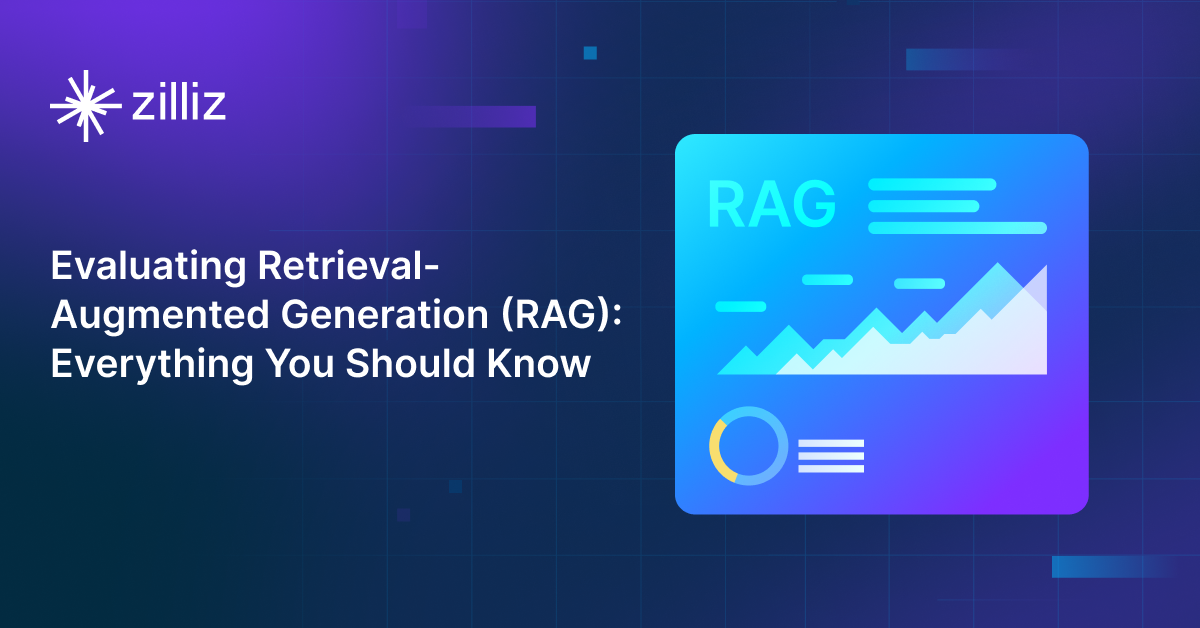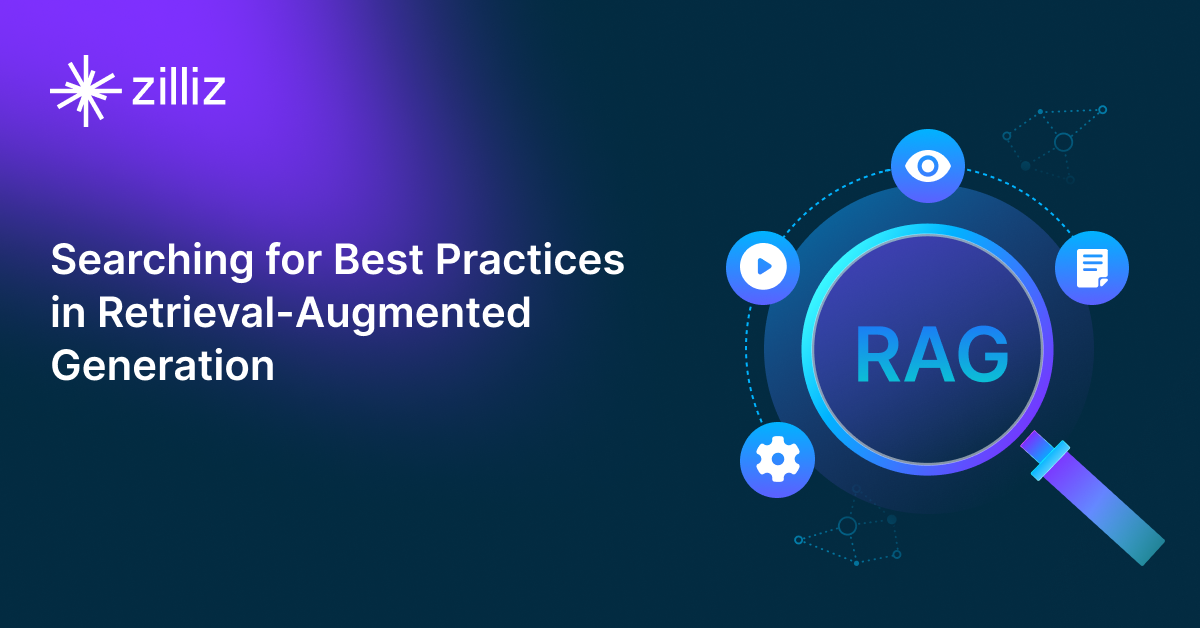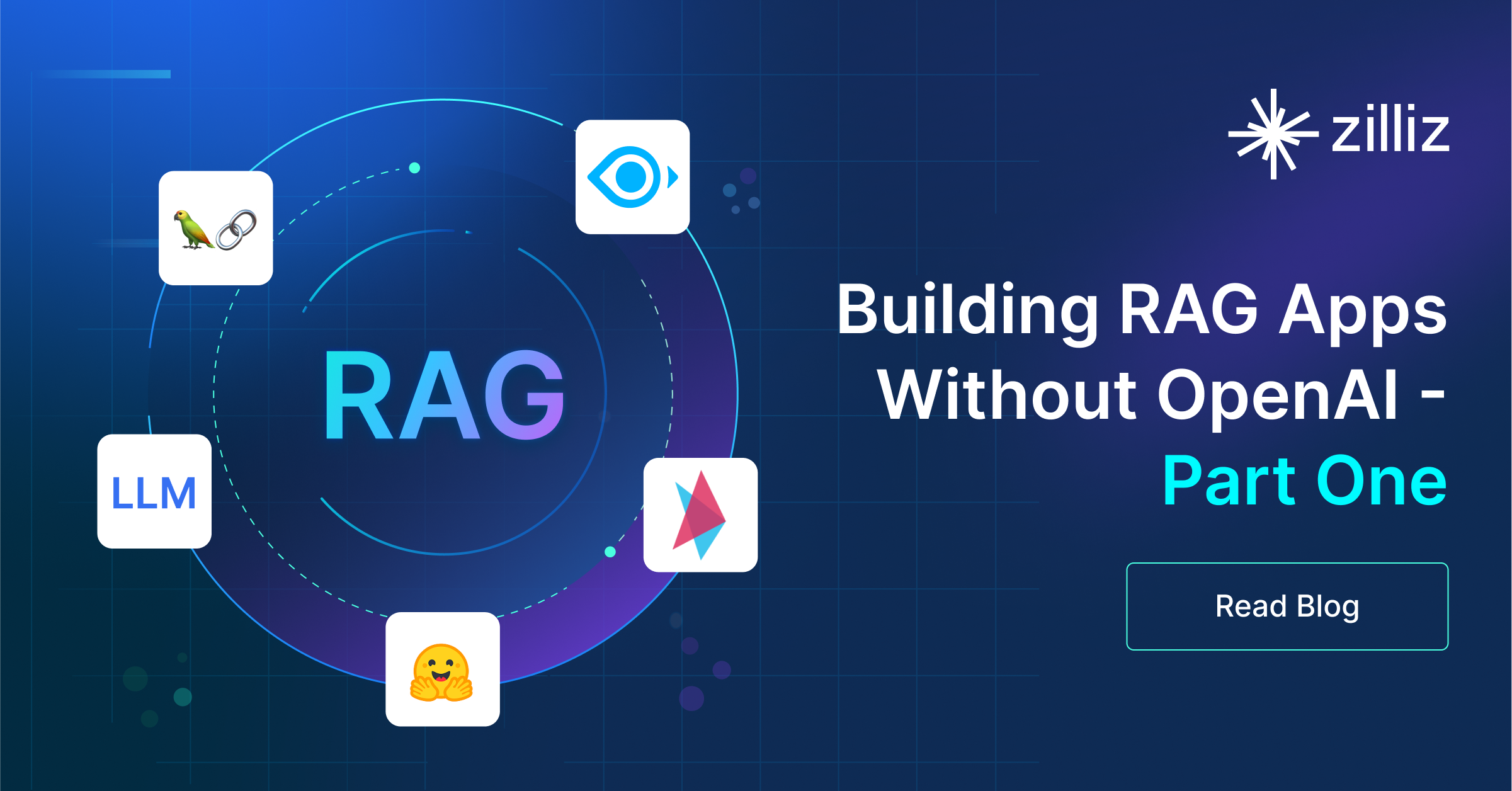Build RAG Chatbot with Llamaindex, Milvus, Solar Mini, and Cohere embed-multilingual-v3.0
Introduction to RAG
Retrieval-Augmented Generation (RAG) is a game-changer for GenAI applications, especially in conversational AI. It combines the power of pre-trained large language models (LLMs) like OpenAI’s GPT with external knowledge sources stored in vector databases such as Milvus and Zilliz Cloud, allowing for more accurate, contextually relevant, and up-to-date response generation. A RAG pipeline usually consists of four basic components: a vector database, an embedding model, an LLM, and a framework.
Key Components We'll Use for This RAG Chatbot
This tutorial shows you how to build a simple RAG chatbot in Python using the following components:
- Llamaindex: a data framework that connects large language models (LLMs) with various data sources, enabling efficient retrieval-augmented generation (RAG). It helps structure, index, and query private or external data, optimizing LLM applications for search, chatbots, and analytics.
- Milvus: An open-source vector database optimized to store, index, and search large-scale vector embeddings efficiently, perfect for use cases like RAG, semantic search, and recommender systems. If you hate to manage your own infrastructure, we recommend using Zilliz Cloud, which is a fully managed vector database service built on Milvus and offers a free tier supporting up to 1 million vectors.
- Solar Mini: Solar Mini is an efficient AI model optimized for high-performance tasks with minimal computational resources. It delivers fast, context-aware responses while maintaining low latency, making it perfect for embedded systems, IoT applications, and mobile devices that need real-time language processing without compromising quality.
- Cohere embed-multilingual-v3.0: A multilingual text embedding model designed to convert text in over 100 languages into high-dimensional vectors (1024 dimensions), excelling in semantic understanding and cross-lingual tasks. Its strengths include robust multilingual alignment and nuanced context capture, ideal for cross-language semantic search, multilingual document clustering, and enhancing NLP applications like recommendation systems in diverse linguistic environments.
By the end of this tutorial, you’ll have a functional chatbot capable of answering questions based on a custom knowledge base.
Note: Since we may use proprietary models in our tutorials, make sure you have the required API key beforehand.
Step 1: Install and Set Up Llamaindex
pip install llama-index
Step 2: Install and Set Up Solar Mini
%pip install llama-index-llms-upstage llama-index
from llama_index.llms.upstage import Upstage
llm = Upstage(
model="solar-mini",
# api_key="YOUR_API_KEY" # uses UPSTAGE_API_KEY env var by default
)
Step 3: Install and Set Up Cohere embed-multilingual-v3.0
%pip install llama-index-embeddings-cohere
from llama_index.embeddings.cohere import CohereEmbedding
embed_model = CohereEmbedding(
api_key=cohere_api_key,
model_name="embed-multilingual-v3.0",
)
Step 4: Install and Set Up Milvus
pip install llama-index-vector-stores-milvus
from llama_index.core import VectorStoreIndex, StorageContext
from llama_index.vector_stores.milvus import MilvusVectorStore
vector_store = MilvusVectorStore(
uri="./milvus_demo.db",
dim=1536, # You can replace it with your embedding model's dimension.
overwrite=True,
)
Step 5: Build a RAG Chatbot
Now that you’ve set up all components, let’s start to build a simple chatbot. We’ll use the Milvus introduction doc as a private knowledge base. You can replace it with your own dataset to customize your RAG chatbot.
import requests
from llama_index.core import SimpleDirectoryReader
# load documents
url = 'https://raw.githubusercontent.com/milvus-io/milvus-docs/refs/heads/v2.5.x/site/en/about/overview.md'
example_file = 'example_file.md' # You can replace it with your own file paths.
response = requests.get(url)
with open(example_file, 'wb') as f:
f.write(response.content)
documents = SimpleDirectoryReader(
input_files=[example_file]
).load_data()
print("Document ID:", documents[0].doc_id)
storage_context = StorageContext.from_defaults(vector_store=vector_store)
index = VectorStoreIndex.from_documents(
documents, storage_context=storage_context, embed_model=embed_model
)
query_engine = index.as_query_engine(llm=llm)
res = query_engine.query("What is Milvus?") # You can replace it with your own question.
print(res)
Example output
Milvus is a high-performance, highly scalable vector database designed to operate efficiently across various environments, from personal laptops to large-scale distributed systems. It is available as both open-source software and a cloud service. Milvus excels in managing unstructured data by converting it into numerical vectors through embeddings, which facilitates fast and scalable searches and analytics. The database supports a wide range of data types and offers robust data modeling capabilities, allowing users to organize their data effectively. Additionally, Milvus provides multiple deployment options, including a lightweight version for quick prototyping and a distributed version for handling massive data scales.
Optimization Tips
As you build your RAG system, optimization is key to ensuring peak performance and efficiency. While setting up the components is an essential first step, fine-tuning each one will help you create a solution that works even better and scales seamlessly. In this section, we’ll share some practical tips for optimizing all these components, giving you the edge to build smarter, faster, and more responsive RAG applications.
LlamaIndex optimization tips
To optimize LlamaIndex for a Retrieval-Augmented Generation (RAG) setup, structure your data efficiently using hierarchical indices like tree-based or keyword-table indices for faster retrieval. Use embeddings that align with your use case to improve search relevance. Fine-tune chunk sizes to balance context length and retrieval precision. Enable caching for frequently accessed queries to enhance performance. Optimize metadata filtering to reduce unnecessary search space and improve speed. If using vector databases, ensure indexing strategies align with your query patterns. Implement async processing to handle large-scale document ingestion efficiently. Regularly monitor query performance and adjust indexing parameters as needed for optimal results.
Milvus optimization tips
Milvus serves as a highly efficient vector database, critical for retrieval tasks in a RAG system. To optimize its performance, ensure that indexes are properly built to balance speed and accuracy; consider utilizing HNSW (Hierarchical Navigable Small World) for efficient nearest neighbor search where response time is crucial. Partitioning data based on usage patterns can enhance query performance and reduce load times, enabling better scalability. Regularly monitor and adjust cache settings based on query frequency to avoid latency during data retrieval. Employ batch processing for vector insertions, which can minimize database lock contention and enhance overall throughput. Additionally, fine-tune the model parameters by experimenting with the dimensionality of the vectors; higher dimensions can improve retrieval accuracy but may increase search time, necessitating a balance tailored to your specific use case and hardware infrastructure.
Solar Mini optimization tips
For optimizing Solar Mini in a RAG setup, focus on maintaining a balance between response speed and model accuracy, given its compact nature. Prioritize concise document chunking to ensure fast retrieval while keeping the context relevant. Leverage prompt tuning to ensure the model generates the most appropriate response for each query. Cache results for high-demand queries to minimize redundant calls and optimize latency. Additionally, ensure that the retrieval pipeline is fine-tuned for minimal resource consumption while maintaining high retrieval quality. Adjust system parameters for scalability, especially in resource-constrained environments like mobile apps and embedded devices.
Cohere embed-multilingual-v3.0 optimization tips
To optimize Cohere embed-multilingual-v3.0 in RAG, preprocess text by normalizing casing, removing redundant whitespace, and filtering low-relevance content. Use appropriate chunk sizes (200–500 tokens) to balance context retention and embedding quality. Batch embedding requests to reduce latency. Leverage its multilingual strength by aligning input language with supported locales and applying language-specific stopword filtering. Fine-tune retrieval with hybrid search (semantic + keyword) and metadata filters. Regularly update embeddings to reflect new data and test retrieval accuracy using diverse multilingual queries to ensure robust cross-lingual performance.
By implementing these tips across your components, you'll be able to enhance the performance and functionality of your RAG system, ensuring it’s optimized for both speed and accuracy. Keep testing, iterating, and refining your setup to stay ahead in the ever-evolving world of AI development.
RAG Cost Calculator: A Free Tool to Calculate Your Cost in Seconds
Estimating the cost of a Retrieval-Augmented Generation (RAG) pipeline involves analyzing expenses across vector storage, compute resources, and API usage. Key cost drivers include vector database queries, embedding generation, and LLM inference.
RAG Cost Calculator is a free tool that quickly estimates the cost of building a RAG pipeline, including chunking, embedding, vector storage/search, and LLM generation. It also helps you identify cost-saving opportunities and achieve up to 10x cost reduction on vector databases with the serverless option.
 Calculate your RAG cost
Calculate your RAG cost
What Have You Learned?
Congratulations on making it through this tutorial! You’ve learned how to harness the power of some incredible technologies to build an efficient Retrieval-Augmented Generation (RAG) system. By integrating the LlamaIndex framework with the Milvus vector database, Solar Mini for data handling, and the Cohere embed-multilingual-v3.0 embedding model, you’ve set the stage for creating a versatile and intelligent application. Each component plays a distinct role: LlamaIndex helps you organize and optimize your data flow, Milvus enables speedy vector search, Solar Mini efficiently processes your input data, and the embedding model ensures your results are contextually rich. With the tips provided, including how to fine-tune each element, you can tweak your setup for even better performance!
But don't let the learning stop here! Dive into the free RAG cost calculator featured in the tutorial to gauge the scale and efficiency of your applications. It’s a great way to future-proof your investments as you continue to experiment and improve your models. Remember, every great project starts with a single step. Take what you’ve learned and let your creativity flow! Start building, optimizing, and innovating your own RAG applications today. The possibilities are endless, and you have the tools to make your ideas come to life. Happy building!
Further Resources
🌟 In addition to this RAG tutorial, unleash your full potential with these incredible resources to level up your RAG skills.
- How to Build a Multimodal RAG | Documentation
- How to Enhance the Performance of Your RAG Pipeline
- Graph RAG with Milvus | Documentation
- How to Evaluate RAG Applications - Zilliz Learn
- Generative AI Resource Hub | Zilliz
We'd Love to Hear What You Think!
We’d love to hear your thoughts! 🌟 Leave your questions or comments below or join our vibrant Milvus Discord community to share your experiences, ask questions, or connect with thousands of AI enthusiasts. Your journey matters to us!
If you like this tutorial, show your support by giving our Milvus GitHub repo a star ⭐—it means the world to us and inspires us to keep creating! 💖
- Introduction to RAG
- Key Components We'll Use for This RAG Chatbot
- Step 1: Install and Set Up Llamaindex
- Step 2: Install and Set Up Solar Mini
- Step 3: Install and Set Up Cohere embed-multilingual-v3.0
- Step 4: Install and Set Up Milvus
- Step 5: Build a RAG Chatbot
- Optimization Tips
- RAG Cost Calculator: A Free Tool to Calculate Your Cost in Seconds
- What Have You Learned?
- Further Resources
- We'd Love to Hear What You Think!
Content
Vector Database at Scale
Zilliz Cloud is a fully-managed vector database built for scale, perfect for your RAG apps.
Try Zilliz Cloud for Free


